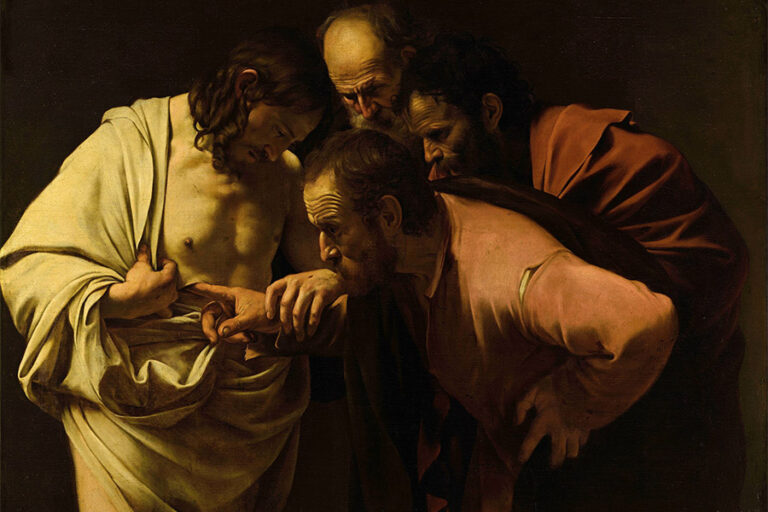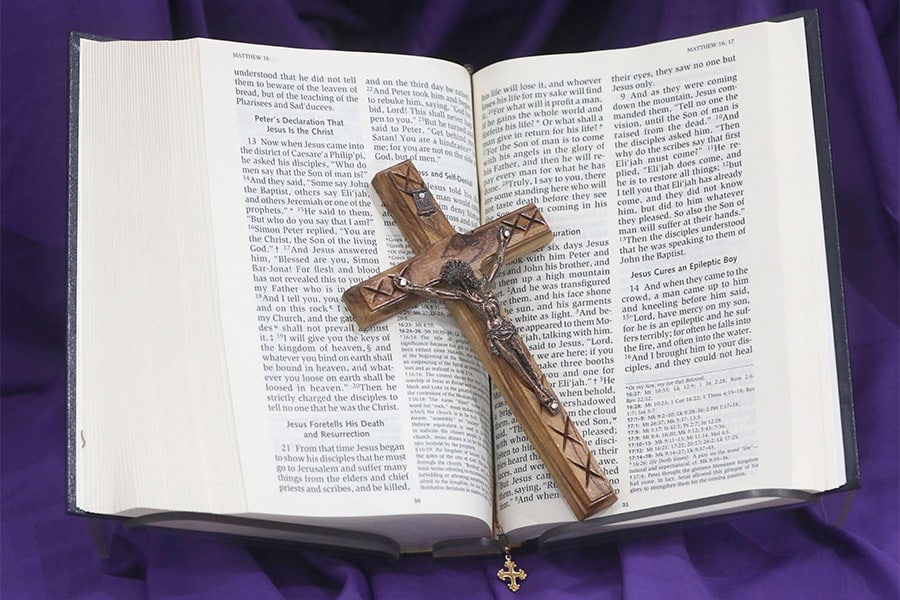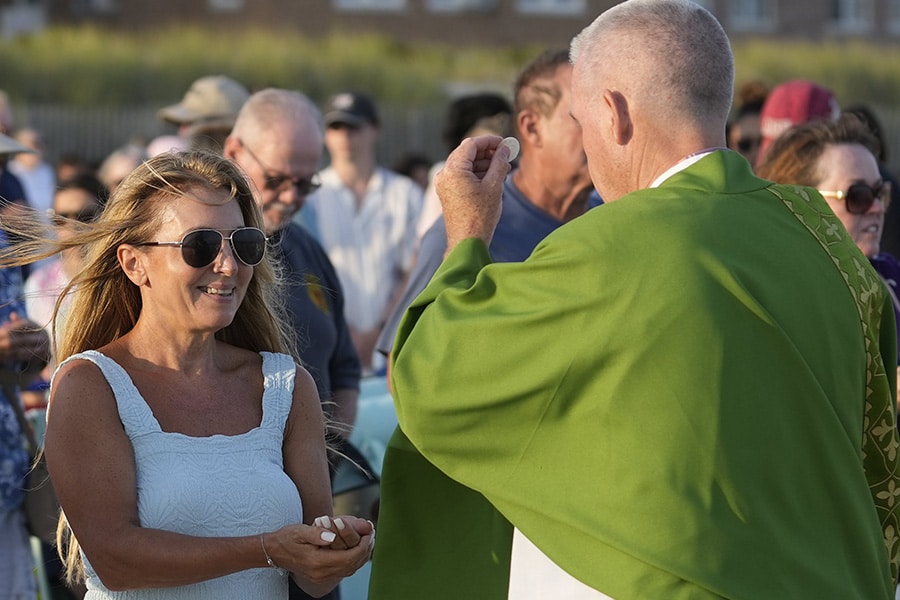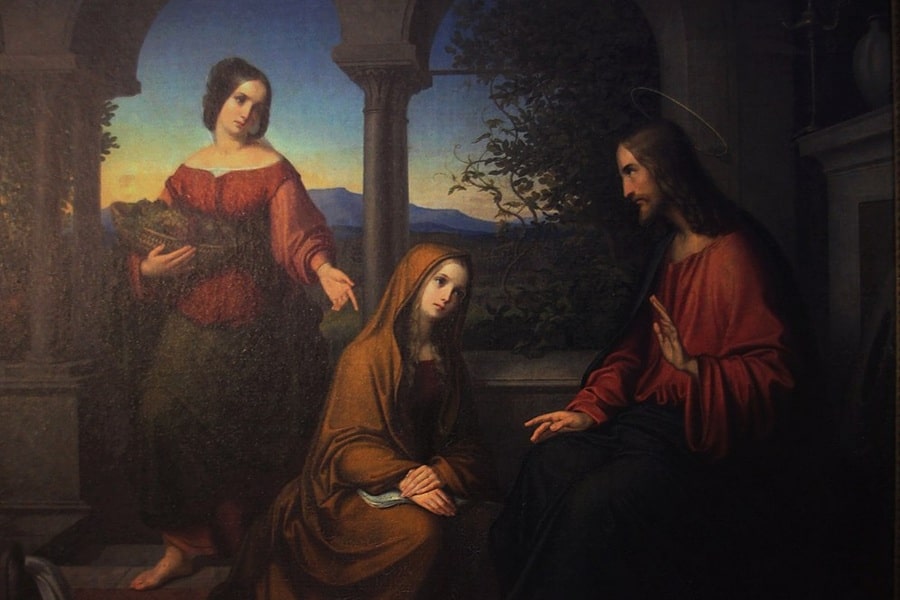Jesus said to [Thomas], “Have you come to believe because you have seen me? Blessed are those who have not seen and have believed” (Jn 20:29).
A recent OSV News article by Maria Wiering examined eucharistic miracles — particularly situations in which a host appears to bleed. In a number of these miracles over the years, scientific examination of the host has revealed the presence of striated muscle tissue — the kind of tissue found in the human heart — and the presence of AB-positive blood, the same blood type found on the Shroud of Turin.
Father Robert Spitzer, head of the Magis Center in California and author of the forthcoming OSV book “Science, Reason, and Faith: Discovering the Bible” ($34.95), sees in these miracles God’s response to the widespread lack of belief in the Real Presence among American Catholics, documented in a 2019 Pew Research Center survey. In a world in which only knowledge that is derived from the scientific method is regarded as true, such miracles may reinvigorate the faith of those doubting Thomases for whom seeing is believing.
The Real Presence: Yet, as Christ himself said to Thomas, “Blessed are those who have not seen and have believed.” Our knowledge of the reality of the Real Presence of Christ in the Eucharist is not confined to those rare circumstances in which the true substance of the host post-consecration, normally hidden beneath the appearance of bread, is revealed. The sacrament itself is the sign of the hidden reality of Christ’s presence among us, in the Body and the Blood. As Pope St. Leo the Great put it, “what was visible in our Savior has passed over into his mysteries.”
Coming to recognize that reality is not a mere matter for the intellect. 2,000 years ago, Christ himself walked the earth, and yet, as Matthew makes clear in Chapter 16 of his Gospel, not everyone who met him recognized him as the Son of God. When Jesus asked his disciples, “But who do you say that I am?” Peter responded in faith, “You are the Messiah, the Son of the living God.” And to that, Jesus replied, “Blessed are you, Simon son of Jonah. For flesh and blood has not revealed this to you, but my heavenly Father.”
Thomas was already a follower of Christ before he encountered him in the Upper Room. He had faith, but his faith had been shaken by Christ’s passion and death. How did he recognize Jesus? Through the wounds of his passion. How did the disciples who walked with Christ on the road to Emmaus say that they recognized him? In the breaking of the bread. “[W]hat was visible in our Savior has passed over into his mysteries.”
Revivifying a flagging faith: The scientific confirmation of eucharistic miracles may revivify a flagging faith, but it is unlikely to spark faith where none previously existed nor, on its own, to sustain the faith it has temporarily revivified. The only sign that we truly need to feed our faith is present before us in the hands of the priest at every Mass. The outward appearance of bread and wine may be all that we can see, but it need not be all that we can sense. Peter, in declaring that Jesus is “the Son of the living God,” was not judging by outward appearance (“flesh and blood has not revealed this to you”) but was distilling his lived relationship with Christ into a statement of faith.
That experience — that lived relationship with Jesus — cannot be quantified and tested and retested in scientific experiments. But it is no less real than the presence of heart tissue or type AB-positive blood in a host in Poland or in Argentina.
There is a difference, though, between knowledge of a verified eucharistic miracle and the experience of a lived relationship with Christ. The knowledge that we gain from that lived relationship requires action on our part. No true relationship can only flow one way. A true relationship requires our active participation.
We aren’t called merely to know what the church teaches about the Real Presence of Christ in the Eucharist. Many nonbelievers know that. In the Eucharist, we are called to a relationship with Christ in his death and resurrection. We are asked to place ourselves at the foot of the cross, to unite ourselves with his sacrifice, to die with him that we may rise to new life in him. Only then can we truly proclaim with Thomas, “My Lord and my God!”
Read More Commentary
Copyright © 2023 OSV News








